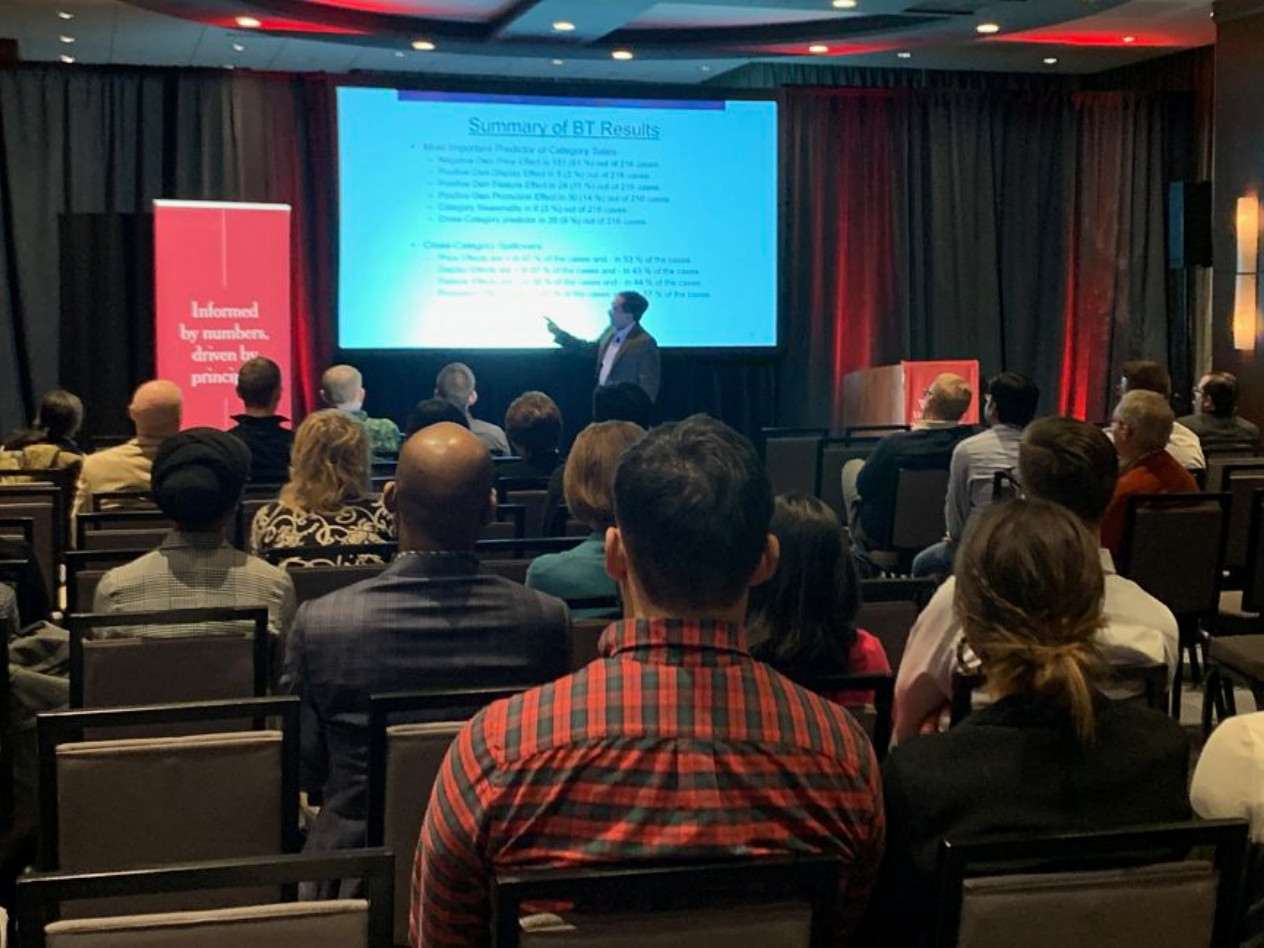Got algorithm? Machine learning quickly evolving to solve business problems
- March 16, 2020
- By Jill Young Miller
- 3 minute read

Big, emerging trends are driving the so-called analytic trend in business.
They are behavioral science, data science (the machine-learning revolution) and addressable technology (the ability to reach individual consumers with personalized marketing messages), Seethu Seetharaman said at a recent event in Minneapolis titled “Got Algorithm?”

“These three forces are really turning on its head how we are applying analytics to solve business problems,” said Seetharaman, director of the Center for Analytics and Business Insights and W. Patrick McGinnis Professor of Marketing at Olin School of Business at Washington University in St. Louis.
“There’s a lot of exciting research going on in understanding how consumers think and feel,” he said. For example, one recent project by some of his colleagues shows that ambient scents in supermarket retail makes a big difference in what customers put in their shopping carts.
If you have the smell of cookies in the air, then consumers buy more healthful foods. You heard that right. It’s almost as if some kind of satiation is going on. If your nose gets its share of that, then your belly doesn’t.
Seethu Seetharaman
Customer data explosion
The words “machine learning” are more than the latest business buzz words. If you’re not tapping into the power of big data analytics, you’re already behind the curve. Seetharaman discussed how to harness big data and machine learning to drive business forward. He explained how machine learning algorithms can predict product sales and compared machine- learning approaches with traditional marketing mix models.
Businesses in every industry are unearthing profit-generating insights unknowable just a decade ago, with customer data collected from scanners, cash registers, online product reviews, wearable devices and other sources.
In retail, research using machine learning shows a manager’s No. 1 job is this: “Set your price right before you worry about all the other marketing levers,” Seetharaman told the Minneapolis audience, where he spoke January 22 about his research in the retail space.
The price of beer
He pointed out some interesting ancillary findings, too. “The price of beer is the most important predictor in terms of predicting cigarette sales as well as predicting diaper sales. … But the converse is not true. So that’s interesting. The price of diapers doesn’t drive the sales of beer. Seasonality is hugely important for beer, and machine-learning algorithms kind of agree with each other in terms of which variables they tag as the most important.”
For price optimization, most managers use heuristics, or rule-of-thumb strategies. Examples include price markups at 25% over cost, pricing 5% below the geographically nearest competitor, and a 20% discount for the store brand versus the national brand, Seetharaman said.
But an algorithmic approach to price optimization can go deeper by solving problems analytically for a single product or numerically for multiple products, he said.
Supermarket category pricing
Seetharaman and Durai Sundaramoorthi, senior lecturer in management at Olin Business School, conducted a study on machine-learning approaches for supermarket category pricing. Using store-level weekly scanner data from 24 product categories in each of nine stores of a supermarket chain over a period of six years, they estimated the six machine-learning models and compared their predictive performance.
Using the best-performing machine-learning model of category sales, they found that, on average, there would be a 229% profit improvement per store when customizing the marketing mix as recommended by their optimization exercise.
“This is a substantively huge dividend for the retailer, especially considering that supermarket retailing involves wafer-thin profit margins,” Seetharaman said.
Brake pads
Seetharaman also talked about solving the riddle of how to customize brake pad prices by store for a national automotive aftermarket retailer.
Even with two years of historical data per store, it was still difficult to estimate the demand model, he said. So he and co-researchers used a technique called “Bayesian shrinkage” to estimate demand at the store level. Their pricing model yielded optimal prices for 90 products in each of the chain’s 3,400 stores.
To learn more, view Seethu Seetharaman’s entire presentation here.
Media inquiries
For assistance with media inquiries and to find faculty experts, please contact Washington University Marketing & Communications.
Monday–Friday, 8:30 to 5 p.m.
Sara Savat
Senior News Director, Business and Social Sciences
